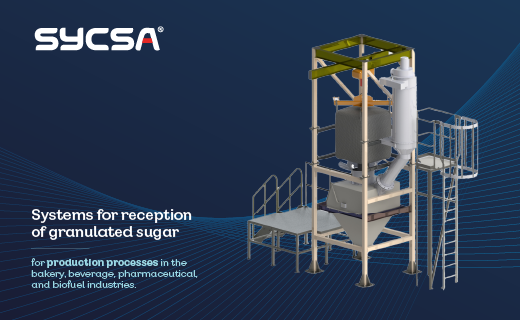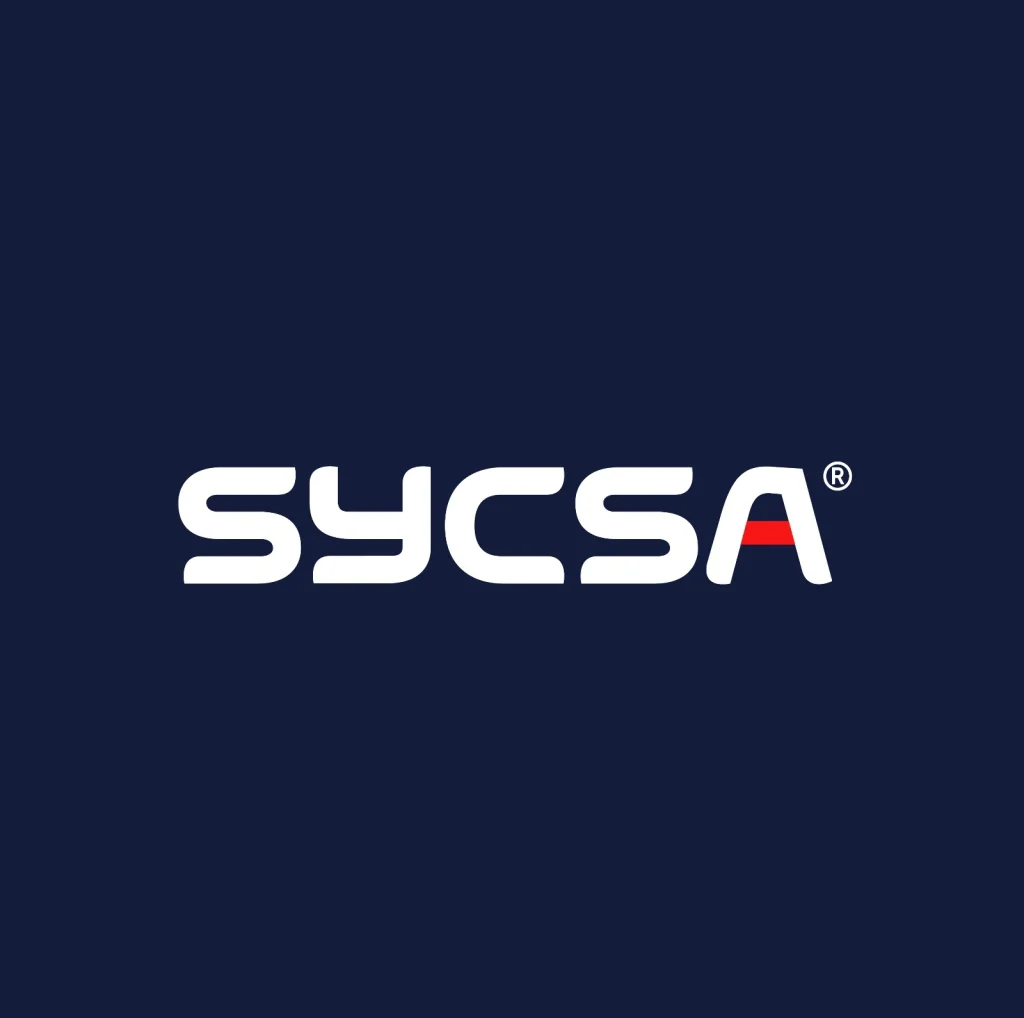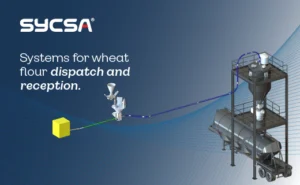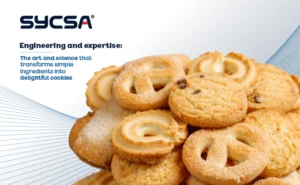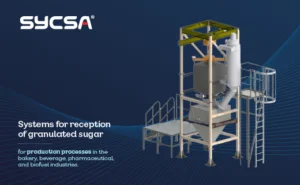SYCSA®, in constant contact with industrial processes that use granulated sugar as a raw material, has developed systems tailored to meet the needs of the bulk material reception stage in their production processes. Each of the methods and presentations of materials for dispatch, transport, and reception currently in use has its own advantages and disadvantages.
Below, we describe the most common presentations for receiving granulated sugar, as well as a quick analysis of their advantages and challenges. Similarly, we mention the systems developed within our company to ensure optimal unloading operations, occupational safety, and quality assurance of the materials received.
1. Polypropylene bags.
Polypropylene bags are a popular and efficient option for the dispatch, transport, and reception of granulated sugar. The main reasons for this popularity are:
- Durability: they are very resistant and can withstand the weight of sugar without tear, which is crucial during transport and storage.
- Safeguard: They offer protection to the materials handled, as they are a good barrier against moisture and other contaminants, helping to maintain the quality of the sugar.
- Reuse: They can be used several times, which can reduce long-term costs and are more environmentally friendly.
- Lightweight: They are relatively light, which facilitates handling and reduces transportation costs.
- Versatility: They can be used to ship different types of products, not just sugar, making them a versatile option for many industries.
There are two main disadvantages to using this type of packaging:
- Operating cost: The cost of the bags can be higher compared to other methods such as bulk transportation.
- Handling: more manual effort is required for emptying, as well as movements and operations of transport equipment such as forklifts to move them from a storage point to a destination point within the production facilities.
2. Bulk bags, super sacks, or bulk sacks.
Super sacks, also known as bulk bags, are used in the reception of granulated sugar for several reasons, among which it is worth mentioning:
- High capacity: they can hold larger quantities of sugar compared to polypropylene sacks, which reduces the frequency of unloading operations and improves operational efficiency.
- Transport efficiency: this increases, as handling and transport in large volumes is facilitated, which is ideal for large-scale operations and exports.
- Reduction of losses: being more robust and secure, they reduce the risk of spills and losses during transport and reception.
- Safety: They help improve product handling, as they require less manual handling and can be handled with equipment such as cranes or forklifts.
- Safeguard: They offer good protection against contaminants and adverse environmental conditions, maintaining the quality of the sugar.
SYCSA® has developed safe equipment that is required for handling and unloading.
3. Liner container
A liner container is a flexible lining that is placed inside a standard container to transport bulk materials. This lining is made of durable and resistant materials, such as polyethylene or polypropylene, and adapts to the shape of the container, creating a protective barrier between the sugar and the container walls.
Among its advantages, the following stand out:
- Size: because they are so large, they allow large volumes of sugar to be transported in a single trip.
- Safeguard: they offer protection against the weather and other external factors.
- Efficiency: they are ideal for export.
This presentation of raw material also requires specific infrastructure for unloading, and at SYCSA® we have the right solutions to carry out these operations efficiently.
4. Hopper Trucks
The pneumatic dry bulk trailers are used to transport granulated sugar for several key reasons:
- Hygiene and safety: They keep the sugar in hygienic conditions throughout the transport process, which is crucial for food and pharmaceutical products, providing excellent protection against external contaminants and adverse environmental conditions.
- Transport efficiency: they enable fast and efficient transport, especially over medium to short distances, which can significantly reduce delivery times.
- Automation: they facilitate automated loading and unloading of sugar, reducing the need for manual handling and minimizing the risk of contamination.
- Reduction of spills: as they are closed and pressurizable systems, they reduce the risk of spills and losses during transport, ensuring that more product reaches its final destination.
- Logistical flexibility: they offer the possibility of adjusting the quantity dispatched according to the specific needs of each customer.
These benefits make transport tanks a popular and efficient option for dispatching granulated sugar, especially in operations that require high hygiene and logistical efficiency.
Conclusion
Each method of receiving granulated sugar has its own advantages and disadvantages. The choice of the appropriate method depends on several factors, including the volume of sugar to be transported, the distance, the cost, and the available infrastructure. At SYCSA®, we consistently support our customers who handle sugar as a raw material in carefully evaluating all variables to select the most efficient and cost-effective method for their operations.


